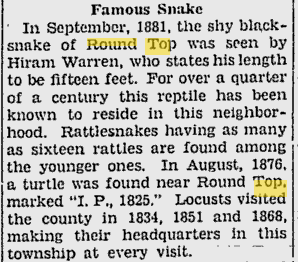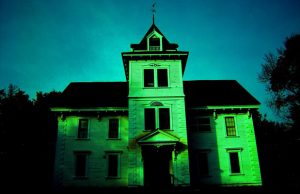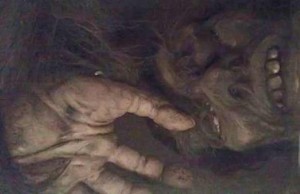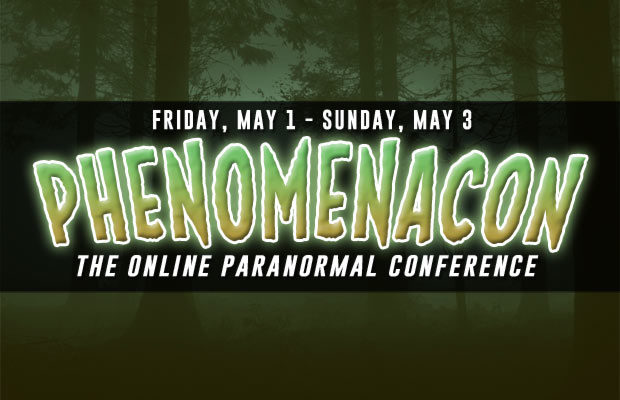Wessie Sheds Her Skin: Maine’s Giant Snake Reappears

Last Saturday afternoon, August 20th, the Westbrook Police department alerted residents that a large snakeskin had been recovered along Maine’s Presumpscot (Abnaki-Penobscot, ME, “ledges in channel”[1]) river around 3 PM near the carry-in boat launch:
“Until the type of snake is determined and we can assess the safety risk, we caution people who recreate along the Presumpscot River to remain alert, maintain a safe distance from any wildlife, and report any sightings of the snake to the Westbrook Police Department,” Westbrook Police Chief Janine Roberts said.
Though the skin certainly appears huge, it’s difficult to tell exactly how long it is without any scaling reference in the photograph. Most sightings of Wessie describe her length at around 10 feet.
ADVERTISEMENT
This is the most recent development in what has become story that has lasted all summer. Reports of a large snake in and around the Presumpscot in Westbrook began in late June 2016, when a resident told police that she saw “a large snake” that was “as long as a truck.” Numerous other sightings included one by a Westbrook Police officer, who managed to snap this photo as he watched Wessie swim across the river (just after he observed the snake eating a large mammal, possibly a beaver) at 3:30 AM on June 29th:

Though by no means conclusive, the regularity and consistency of reports leading up to a sighting by a local police officer assured many that there was likely an actual large out of place snake in the Presumpscot River in the summer of 2016. A much more complete and informative description of the sightings and events can be found on Loren Coleman’s (Director of the International Cryptozoology Museum in nearby Portland, ME, who has personally investigated the Wessie sightings in Westbrook) website here and here.
Though the appearance of the skin suggests that we’ll soon have an answer for what exactly Wessie is, and hopefully some clues regarding the circumstances of how she found herself in Maine, she is only the most recent example in a long tradition of oversized snakes in North American folklore. As cryptozoologist Chad Arment demonstrates in his book Boss Snakes (2008, Coachwhip Publications), folkloric reports of giant snakes in the history of the North America are much more common than you might expect. Arment’s book stretches to nearly 400 pages, full of giant snake stories throughout American history reproduced from their original sources. Rather than rewriting accounts into his own voice, Arment lets the data speak for itself. Some locations of the country are more active than others, for example, the south-central region of Pennsylvania reaching from the northwestern mountains of Adams County into Franklin, Fulton and Bedford counties have yielded an especially high number of giant snake stories. [2]

Perhaps the most famous snake in this region was the animal reputed to inhabit the now famous Devil’s Den. The Den is a small hill covered in large boulders which became an important location during the Battle of Gettysburg, when Confederate Major General John Bell Hood’s division captured the hill from Union defenders in what would become one of the Confederate Army’s few successes at Gettysburg. Long before the battle, however, the area around Devil’s Den was known as the home of a giant snake. Beginning in 1855, the area between the Den and Emmitsburg Road was the location of multiple reports of a black snake reaching up to 15 feet in length. According to the Gettysburg Times: “For over a quarter century this reptile has been known to reside in this neighborhood – it was named ‘The Devil’, and the place assumed to be its den became ‘The Devil’s Den’.[3] A few sources credit the source of the name as a depression in one of the boulders whose shape appeared to resemble a “horned bat.” Today, as a destination for both history buffs and ghost hunters, Devil’s Den seems to be haunted in more ways than one.
Much more recently, in the summer of 2014 there were a series of reported encounters with a giant snake in northern New Jersey’s Lake Hopatcong, a very large though relatively suburban lake with houses lining most of its shore. After experts sent by the state were unable to recover hard evidence of the creature, it was concluded that there had never been a large snake in Lake Hopatcong. [4]
Stories of giant snakes in North America extend far past our modern history, our colonial European history, and into the stories and beliefs of the continent’s indigenous peoples. As Victor Barnouw (1916–1989), professor emeritus of anthropology at the University of Wisconsin–Milwaukee notes in his 1979 book Wisconsin Chippewa Myths & Tales: And Their Relation to Chippewa Life, giant snakes were an integral aspect of many Native people’s worldviews. These stories were prevalent enough that Barnouw writes:
“The term “memorate” has been given to such experiences, reported by individuals as true events. We can see that these experiences must be structured and perceived as true by a mental set imbued with traditional beliefs. The Indian’s encounter with a giant snake and thunderbirds was experienced by him in such a way that he could tell it as a true story.”
Barnouw is telling us that giant snakes and thunderbirds (!) were essential components of Chippewa worldviews, so much so that narratives of encounters with such beings had the basic character and structure of real-world events, told as though the storyteller actually experienced them (Barnouw is, obviously, presuming that no such encounter could actually take place). Indeed, very locally, the Abenaki (the same local language group from whom the Presumpscot river is named) people described in their folklore the Kita-Skog or Pita-Skog, meaning “grand snake” who lived in rivers and lakes. The Kita-Skog is a regional example of the Horned Serpent common among Native American folkloric traditions. [5]
I wonder what Barnouw would have thought about the data we possess now regarding the visionary experiences of non-native people in North America with these very same specific beings, giant birds and snakes, by individuals who presumably are not engaged in a cosmology in which the existence of these supernatural animals is widely taken for granted. Though the skin in found on the shores of the Presumpscot seems to suggest that Wessie’s origin is less visionary than others, she certainly warrants inclusion in the long history of giant snake folklore in North America.
[1] https://archive.org/stream/indianplacenames00hude/indianplacenames00hude_djvu.txt
[2] http://blog.pennlive.com/wildaboutpa/2015/06/giant_snakes_unconfirmed_but_r.html
[3] https://en.wikipedia.org/wiki/Devil%27s_Den#cite_note-5
[4]http://www.nj.com/morris/index.ssf/2014/07/
[5] https://en.wikipedia.org/wiki/Abenaki_mythology
MORE GREAT STORIES FROM WEEK IN WEIRD:












You must be logged in to post a comment Login